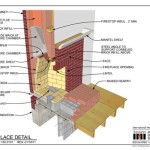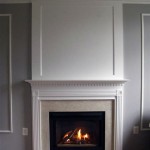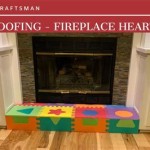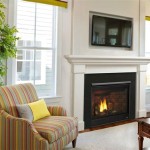Direct Vent Wood Fireplaces: A Comprehensive Guide
Direct vent wood fireplaces are a popular choice for homeowners seeking the warmth and ambiance of a traditional fireplace without the complexities of a traditional masonry fireplace. They offer a convenient and efficient way to enjoy a fire in your home while ensuring safe and effective operation. This article will delve into the workings of direct vent wood fireplaces, explore their advantages and drawbacks, and provide insights into their installation and maintenance.
Understanding Direct Vent Technology
Direct vent wood fireplaces utilize a sealed system that channels combustion air directly from the outdoors and exhausts flue gases directly outside. This eliminates the need for a chimney and simplifies installation. The system consists of a firebox, a vent pipe, and a vent terminal that extends through the exterior wall. The vent pipe transports both fresh air for combustion and exhaust gases to the exterior.
The direct vent system ensures optimal airflow, drawing in fresh air for combustion and efficiently expelling smoke and gases. This design enhances safety and efficiency, reducing the risk of backdrafting and maximizing heat output. The sealed system also prevents the loss of conditioned air from the home, contributing to energy efficiency.
Advantages of Direct Vent Wood Fireplaces
Direct vent wood fireplaces offer several advantages over traditional fireplaces, making them an appealing choice for many homeowners.
1. Installation Flexibility
Unlike traditional fireplaces that require a complex chimney system, direct vent fireplaces can be installed in various locations throughout the home. The only requirement is a wall that leads to the exterior. This flexibility opens up opportunities to create a cozy fireplace in rooms that wouldn't otherwise be suitable, such as bedrooms or smaller living spaces.
2. Enhanced Efficiency and Safety
The sealed system in direct vent fireplaces ensures that combustion air is drawn from the outdoors, eliminating the possibility of backdrafting or drawing air from the living space. The system also ensures efficient flue gas expulsion, maximizing heat output and minimizing energy loss. The closed system also promotes safety by preventing the escape of dangerous byproducts into the home.
3. Reduced Maintenance
Direct vent wood fireplaces require minimal maintenance compared to traditional fireplaces. The sealed system reduces the accumulation of creosote, a highly flammable substance that can build up in chimneys. Regular cleaning of the firebox and vent system is sufficient to maintain optimal performance and safety.
Drawbacks of Direct Vent Wood Fireplaces
While direct vent wood fireplaces offer numerous benefits, they also have some drawbacks that potential homeowners should be aware of.
1. Limited Heat Output
Direct vent wood fireplaces generally produce less heat output compared to traditional fireplaces. While they can provide a cozy warmth for a smaller space, they may not be suitable for heating larger rooms or the entire home.
2. Aesthetic Considerations
The vent terminal on the exterior wall can be a visual deterrent for some homeowners, impacting the aesthetic appeal of the home's exterior. Depending on the model, the fireplace itself may not have the same architectural grandeur as a traditional masonry fireplace.
3. Installation Costs
While direct vent fireplaces are generally less expensive to install than traditional fireplaces, the initial cost can still be significant. The installation process involves cutting through the exterior wall for the vent terminal and connecting the vent pipe to the fireplace. Professional installation is recommended for optimal performance and safety.
Choosing the Right Direct Vent Wood Fireplace
When choosing a direct vent wood fireplace, consider factors such as the size of the room, your heating needs, and your budget. The efficiency and heat output of different models vary, so it's crucial to select a unit that meets your requirements. Ensure that the fireplace is certified by a reputable organization, such as the National Fireplace Institute (NFI), for safety and performance.
Furthermore, seek professional guidance from a qualified fireplace installer to determine the optimal size and model for your space and heating needs. They can provide expert advice on installation, maintenance, and safety protocols.

What Is A Direct Vent Fireplace Fireplaces Learning Center
Gas Fireplace Venting Explained Heat Glo

Versatile Direct Vent Options

What Is A Direct Vent Fireplace Fireplaces Learning Center

Vented Vs B Vent Direct Free Dixie S

What Are The Best Ways To Vent A Gas Fireplace Zoroast

What Is A Direct Vent Fireplace Fireplaces Learning Center

Stop Cold Air From Wood Or Gas Fireplace

Fireplace Insert Venting Demystified Gas Direct Vent Inserts

Direct Vent Fireplaces How They Work And Why You Need One








